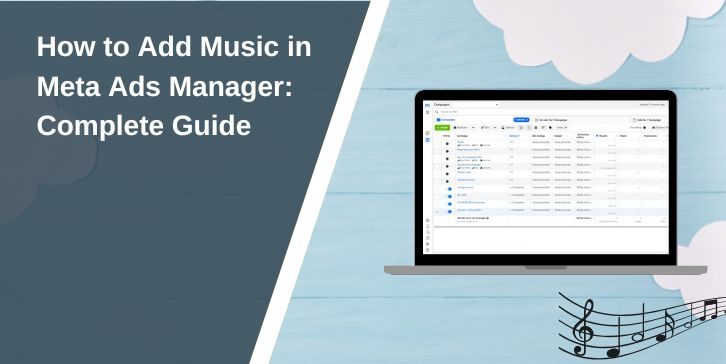The goal of increasing sales on the internet is the objective of many businesses, small and big alike. Utilizing Amazon PPC tools can be a game-changer in maximizing your sales performance on the platform. It doesn’t matter if you have a mom-and-pop retail shop or work for an online retailer such as Amazon; expanding sales via online channels can be a bit like bowling a ball – it appears to be a lot simpler.
What are the various kinds of advertising on the internet?
 Online advertising comes in various types based on your sales and marketing goals. For example, if you’re an established shoe company and wish to reach local customers in your area who want to purchase shoes, it is best to opt for paid search ads since you’ll be tapping on the volume of searches for shoes. Like this, different purposes will require different types of advertisements. What are these types? We’ll be discussing the most popular advertising channels in-depth:
Online advertising comes in various types based on your sales and marketing goals. For example, if you’re an established shoe company and wish to reach local customers in your area who want to purchase shoes, it is best to opt for paid search ads since you’ll be tapping on the volume of searches for shoes. Like this, different purposes will require different types of advertisements. What are these types? We’ll be discussing the most popular advertising channels in-depth:
- Paid-search advertising
- Native advertising
- Display ads
- Social media advertisements
Pay Per Click (PPC) Advertising
Pay-per-click or PPC advertising is a form in which businesses must pay a fee every time the user clicks on an advertisement. There are a variety of platforms that provide PPC services, which includes Facebook.
We will concentrate on the most well-known method of PPC advertising, which is pay-per-click.
Paid-for-click advertising is the process of the placement of PPC advertisements on search engines such as Google. Through paid search ads, companies bid on the placement of their ads to show as an affiliate link on the search results page.
If search engine users search for relevant keywords related to the company, the PPC ad will be shown right in the upper right corner of the search results.
Native advertising
Have you ever read an article that ended up being an advertisement? Perhaps you’ve seen native ads. This kind of advertisement typically is an advertisement in a publication online or video that look similar to the editorial content but is paid by an advertiser to market their product or service.
Native ads like these are popular on sites like Forbes, New York Times, Buzzfeed, and others. This type of advertisement is rooted in the notion that these publications receive an enormous organic reach in their content and can aid brands in mirroring the reach of their publications by renting the editorial space for advertising revenue.
For instance, the New York Times native advertising unit T Brand Studio has produced stunning native ads that have received the same amount of attention as their organic content. Check out the post they wrote on Pointe Shoes from Grit & Grace.
Display Advertising
Display advertising attracts users to the website, social media platform, or any other digital platform to take action. They are typically comprised of text-based images or video ads that entice users to click through to the landing page and then make a decision (e.g., make an online purchase).
Most online and display advertising campaigns are priced on a cost-per-click (CPC) basis. In other words, every time a user on the search engine clicks your ad, you’ll be the amount that depends on your bid strategy.
They may also be utilized to retarget campaigns. These are when ads are shown to people who have previously been to a website. This goal is to “retarget” users and motivate users to visit the site to complete the identical step (or the same action but at a different point in the funnel).
With that in mind, let’s consider what constitutes a good display ad campaign and how to create compelling ads that will attract your ideal viewers.
Social Media Advertising
 Social media advertising, also known as targeting on social media, is advertisements that are shown to users on social media platforms.
Social media advertising, also known as targeting on social media, is advertisements that are shown to users on social media platforms.
Social networks use user data to deliver highly relevant ads in response to interactions on an individual platform.
Steps to Build a Creative Social Media Advertising Strategy
1. Decide what you want to sell.
If your business’s e-commerce site only sells and produces only one item, or if you already have a clear top-selling thing, you can avoid this step.
If your company has a more excellent product range, knowing which products are the most valuable must be the main focus of your marketing strategies.
2. Research your audience.
The customer is not only buying the actual product. However, they are also buying what the product can help them. Common Thread Collective identifies three different levels of problems with products:
- Physical: The item itself.
- Functional what does the product do to benefit the customer.
- Identity: The way it makes the user feel.
3. Use a creative platform.
While the idea for social media opened the doors to many new possibilities for digital marketing, you need to acknowledge that all social media platforms have their limitations.
4. Create a digital marketing campaign.
 Once you’ve identified your target audience, your product, and your platform is time to start making the pieces work.
Once you’ve identified your target audience, your product, and your platform is time to start making the pieces work.
Are you unsure where to begin? These notable actions will get you started on the path to creating a successful digital marketing campaign.
- Determine your goals.
- Identify your target audience.
- Create personas of the customer.
- Determine your budget.
5. Enhance your performance.
The final objective of advertising on social media is to increase the site’s customers and sales. The role of a marketer obligated you to ensure that customers get there. However, before a consumer clicks the “Complete Purchase button, there are many steps they need to go through to achieve that.
Conclusion
A well-crafted ad is memorable, showcases the value of the item or service, and is remembered by its audience even after seeing it. This list of advertising platforms and strategies we’ve discussed will assist you in getting closer to creating ads that are memorable and effective.





Comments are closed.